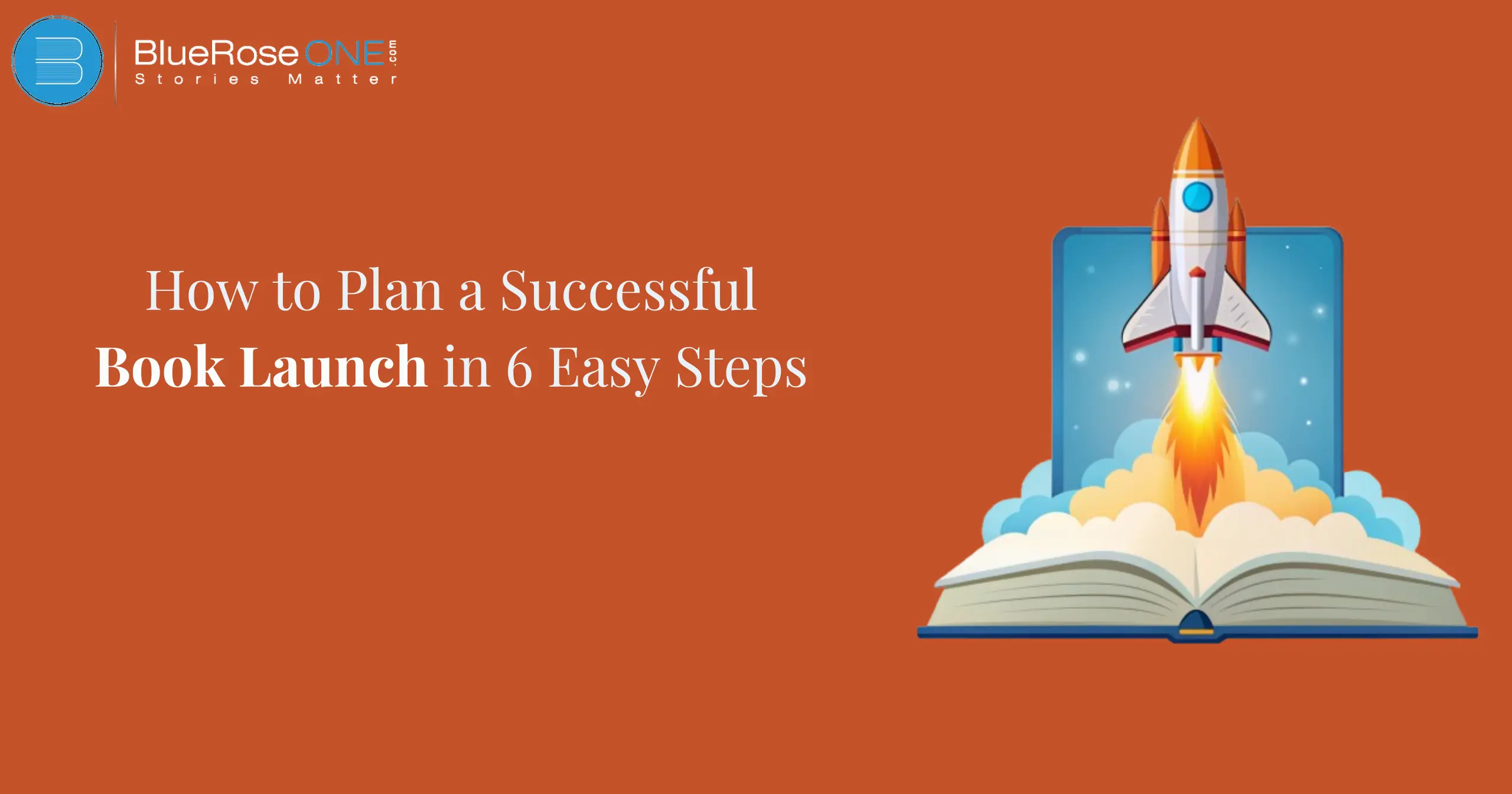It’s time to release your book to the world now that you’ve finished writing it. However, how can you make sure that as many people as possible read your book? The secret is to organize an effective book launch. A book launch is a planned marketing initiative that aims to increase awareness and revenue right away. It goes beyond simply announcing the publication of your book.
Whether you are an experienced writer or a first-time author, organizing a book launch can be daunting. But don’t worry, I’ve got this step-by-step tutorial covered for you. Let’s get started on the six simple procedures that will ensure your book launch is a huge success!
Step 1: Define Your Goals
Establishing your personal definition of success is essential before you begin organizing the launch of your book. Do you want to become a best-seller, or are you more concerned with developing a loyal readership? Knowing your goals will enable you to adjust your launch plan appropriately.
Understand Your Objectives
It’s important to “Understand Your Objectives” when organizing a book launch. Having a clear goal in mind will help you develop a targeted plan, whether that goal is to increase sales, develop your author brand, or get more followers.
Your choices regarding target audience, event preparation, and marketing are guided by well-defined objectives. By establishing your objectives,
you may better gauge your book’s success and customize the launch to suit certain requirements, all of which will contribute to a more memorable publication.
Set Realistic Expectations
Setting reasonable goals is crucial when organizing a book launch. Clearly state your objectives, such as boosting media exposure, developing an author brand, or increasing book sales.
Recognize that a book launch is only the start, not the finish, of your book’s journey. You can more accurately gauge your progress and modify your tactics if you set attainable goals. This strategy makes sure your book launch is successful and fits in with your long-term writing objectives.
You may also like: Top 10 Ernest Hemingway Books Every Reader Should Explore
Step 2: Know Your Target Audience
Knowing your target audience is key to crafting a compelling book launch. Understanding who your readers are and what they want will guide every aspect of your launch strategy, from the messaging to the marketing channels you choose.
Identify Your Ideal Readers
Determining who your ideal readership is is crucial to organizing a successful book launch. You can better target your marketing efforts and messaging to draw in the proper customers by being aware of who your target demographic is.
Take into account things like their age, hobbies, reading preferences, and favorite genres. By concentrating on these details, you can develop a more engaging book launch strategy that appeals to your target readership and raises the likelihood that your book will be picked up by those who will most likely find it enjoyable.
Research Market Trends and Preferences
Understanding your target audience through market trends and preferences is essential when organizing a book launch. You may better adapt your book and marketing plan by being aware of popular genres and current reader interests.
Bestsellers, reader reviews, and social media conversations can all be used to help you find trends and reader preferences that complement your work. With this information, you can make a book launch plan that is more successful and raise your chances of success.
Step 3: Build a Strong Marketing Plan
A comprehensive marketing campaign is necessary for a book launch to be successful. All of the promotional efforts you will do leading up to, during, and following your launch should be included in this plan.
Utilize Social Media and Online Platforms
Understanding your target audience through market trends and preferences is essential when organizing a book launch. You may better adapt your book and marketing plan by being aware of popular genres and current reader interests.
Bestsellers, reader reviews, and social media conversations can all be used to help you find trends and reader preferences that complement your work. With this information, you can make a book launch plan that is more successful and raise your chances of success.
Leverage Email Marketing
One effective strategy for a successful book launch is email marketing. You can generate interest and excitement for your book before it is released by compiling a list of prospective readers beforehand.
To maintain audience interest, include updates, behind-the-scenes photos, and exclusive information. By establishing a relationship with your readers through personalized emails,
you increase the likelihood that they will support the release of your book. E-mail marketing done right can increase sales and exposure for your book.
Collaborate with Influencers and Bloggers
Working together with bloggers and influencers is an essential tactic for a book launch that succeeds. Influencers and bloggers are great partners for book promotion since they already have a following of people who follow their suggestions.
Make contact with others who enjoy the same genre as your book and request that they review or highlight it on their sites. Increased visibility and buzz can result in higher pre-orders and sales on the day of your book launch.
Step 4: Create a Pre-Launch Buzz
Generating buzz before your book officially launches is crucial for building anticipation and excitement. A well-executed pre-launch campaign can significantly impact your book’s initial sales.
Plan Teasers and Sneak Peeks
Create teasers and sneak peeks in advance of your book’s release to generate anticipation. To keep your audience interested, post character drawings, behind-the-scenes pictures, or excerpts from your work on social media.
These excerpts build excitement and entice prospective readers to continue reading until the book is published. You may create excitement and improve the success of your book launch by providing a sneak peek, which will guarantee a great start for your upcoming release.
Host Pre-Launch Events and Giveaways
Organize giveaways and pre-launch events to build anticipation for the release of your book. These events are a fantastic way to meet new readers and can be in-person or virtual.
To keep your audience interested, consider offering unique content, author Q&A sessions, or advance looks at your book. Giveaways, such autographed copies or merchandise, inspire readers to tell others about your book, increasing its visibility and creating buzz about its release.
You may also like: Is it Collaborating with a Book Marketer?
Step 5: Execute the Launch Day Strategy
Launch day is the culmination of all your hard work. It’s the day your book is finally out in the world, and you want to make sure everything goes off without a hitch.
Organize a Launch Event
Plan a Book Launch Event: This is a fantastic way to introduce your audience to your new book and celebrate it. Arrange a lighthearted and participatory gathering where you can sign books, respond to inquiries, and read passages.
Choose a venue that fits the tone of your book, like a local bookstore or a cozy café. Make sure to publicize your book launch event on social media to attract as many guests as possible and create excitement around your book.
Engage with Your Audience Live
Having live interactions with your audience is one of the finest methods to generate enthusiasm for your book launch. You can interact with your readers in real time by holding a live event, such a reading or Q&A session.
It fosters a more intimate relationship, invites inquiries, and gives individuals a chance to offer their thoughts on your book. This participatory strategy can improve the visibility and sales of your book.
Step 6: Post-Launch Follow-Up
The work doesn’t stop once your book is launched. Following up with your readers and continuing to promote your book is essential for sustaining momentum.
Gather Feedback and Reviews
Getting comments and reviews from readers is crucial to establishing your reputation and drawing in new ones after your book is released. Urge people who came to your book launch to post a review on sites like Goodreads and Amazon.com.
Positive reviews can boost your book’s visibility and help new readers decide to pick it up. Actively engage with readers by asking for their opinions and thanking them for their support, which can foster a loyal community around your book
Plan Ongoing Promotion and Engagement
Plan for continued participation and promotion following the publication of your book to maintain the momentum. Maintain your social media updates, publish newsletters, and engage readers in conversation through book clubs or comments.
In order to draw in new readers, you may also run sweepstakes or provide temporary discounts. Engaging with your audience on a regular basis helps sustain interest in your book and promote word-of-mouth marketing, both of which are essential for sustained success after the original book launch.
Conclusion
The exciting path of book launch demands meticulous preparation and execution. You’ll position yourself for success if you adhere to these six steps: identifying your objectives, comprehending your target market, developing a marketing strategy, generating buzz prior to debut, carrying out a launch day plan, and following up after launch.
Recall that it’s crucial to continue being flexible and attentive to the demands of your audience. Now go on and confidently publish your book!
















